
As I said previously, in March (in New York Timeline (1913)), I’m totally fascinated by Rudolph Valentino’s first years in the USA; particularly those spent in and around New York from 1913 to 1917. Forty two or so months crammed with incident; six months of which are, apparently, an impenetrable void. This month, June, I look in some detail at 1914 — one of his most difficult years. Anyway, here is: New York Timeline (1914).
January
For Marchese Guglielmi the first few months of 1914 are, for-want-of-a-better-phrase, a Social Whirl. Determined to put behind him his miserable Festive Period, he plunges into the dance-mad city of New York. His accommodation, Giolito’s, at 108-110 W. 49th St., is situated just east of Broadway, ten blocks south of Central Park, ten or so more north west, of the gleaming and glistening, newly-opened Grand Central Station, and a quick walk away from several exciting afternoon and evening establishments. At which, by all accounts, he becomes a regular.
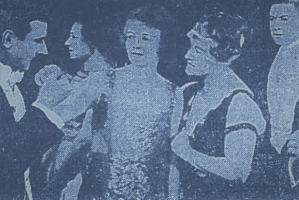
He calls on his fellow S. S. Cleveland passenger, Miss Eleanor Post, and they go riding in Central Park at least once. He also pays a visit and introduces himself (with a letter of introduction), to Social Butterfly, Schuyler L. Parsons Jr.; who invites him to remain for dinner and then join the various guests, when they go out to dance until the early hours.
Miss Post had, along with Marion Herrion, been the young woman who’d enjoyed many hours dancing the latest dances, with Rodolfo Guglielmi, in the Second Class dining room. (Their friendship didn’t last.) Mr. Parsons, meanwhile, was a person whose name appeared in the press with alarming regularity, as an attendee, of dinner and theatre parties, dance parties and other exclusive society events. It’s interesting that he featured in an amateur film, The Flame of Kapur (1916), as a villain, not dissimilar to the sort played by Valentino a few years later. (He was to be a friend of Rudy’s right to the end.)
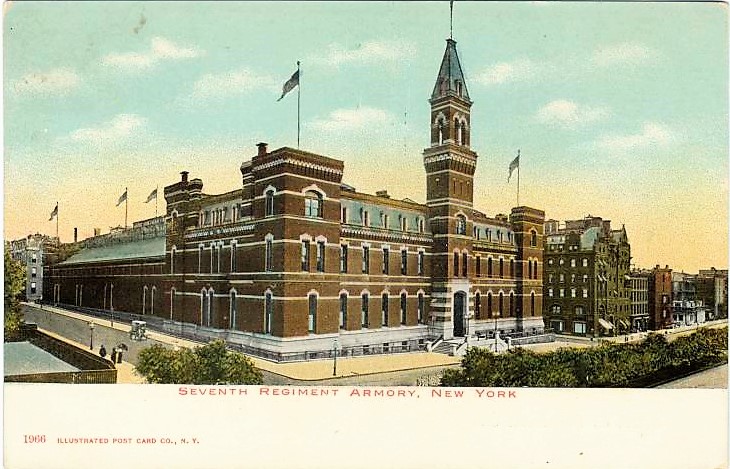
February
Rodolfo continues to socialise hopeful it’ll lead to something. He reacquaints himself with three Paris friends: brothers Count Otto and Count Alex. von Salm-Hoogstraeten, and their friend, Georges/George T. Aranyi. The trio are in the US to play tennis, and Rodolfo no doubt watches them, at the National Indoor Championship Tournament, at the Seventh Regiment Armoury, 643 Park Avenue, in mid. February. Afterwards, in the evenings, the quartet enjoy nights out.
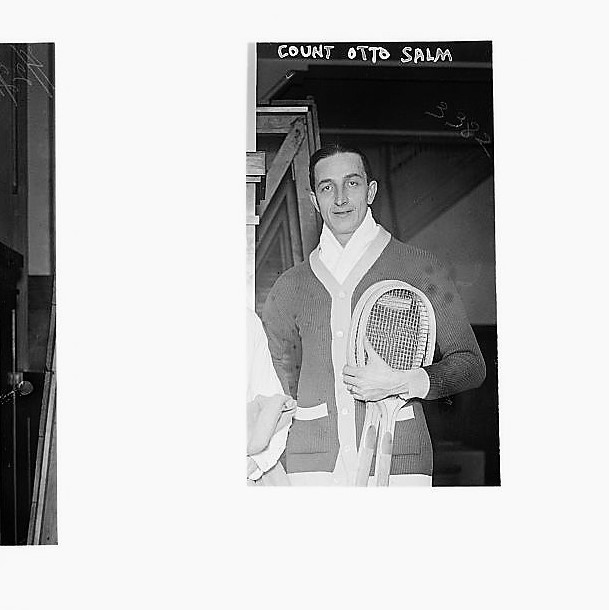
Austrians, Otto and Alex., and Frenchman George, too, were seemingly all a little older than their Italian playmate. (Otto was born in 1886 and Alex. (who would perish during WW1) in 1890.) So being in their company would’ve been something of an education for someone not yet 19. I personally don’t believe that the Salms taught Valentino to tango at the Central Park Zoo, as his female fellow passengers on the Cleveland said he already knew it. However, there’s no doubt they taught him other things, and that he was a willing Pupil.
The addiction of New Yorkers at this time to dancing is clear when we peruse the city’s newspapers and see how often it’s mentioned. At the start of the month a report states that the Pope has neither banned the Tango nor endorsed La Furlana. A review, days later, of The Laughing Husband, an operetta at the Knickerbocker Theatre, reveals how “Graceful Steps [Of] A New Sort” had been added to the U. S. adaptation, and that the chorus did “The Tango”. (You can listen to a medley here.) On the 9th, we see a story about 2,000 waiters, trotting, tangoing, dipping, maxixeing, and hesitating, at the Manhattan Waiters’ Association Annual Ball. (In many instances with each other.) On the 14th, we view fourteen recent or expected social gatherings, of which seven included dancing. The 17th saw the Castles, Vernon and Irene, explaining to Marguerite Mooers Marshall, a columnist, how to dance the Half and Half. And at the close of February, we learn that the Arabian Nights Ball, on the 26th, at the Folies Marigny, had begun at midnight, and had been: “… JUST ONE DANCE AFTER ANOTHER.”
March
Thanks to high living and nightly shenanigans, with the Salms, Aranyi, and with others, Rodolfo’s funds are dwindling; and as he commences the month, he begins to appreciate he’s unable to continue in the same fashion as in January and February. In order to save money he quits his quarters at Giolito’s, and moves to less expensive, unknown, Uptown rooms.
Knowing he’ll soon have to find employment, he’s also eager to seriously improve his basic English. He understands that what he learned at Nervi won’t be sufficient for him to be able to work, and he’ll be unable to improve it, while he’s surrounded by fellow Italians.
His departure from Giolito’s isn’t fixed in stone and it could easily have occurred in February. The reason being, that the position he secured as a Gardener (thanks to a letter of introduction (from his older brother Alberto), to outgoing Commissioner of Immigration, William Williams), commenced after the snow had melted. As I only saw bad snow reported locally in early March, and not later, we have to accept the possibility he was out of his initial accommodation earlier than was previously thought. Maybe even by the middle of February.
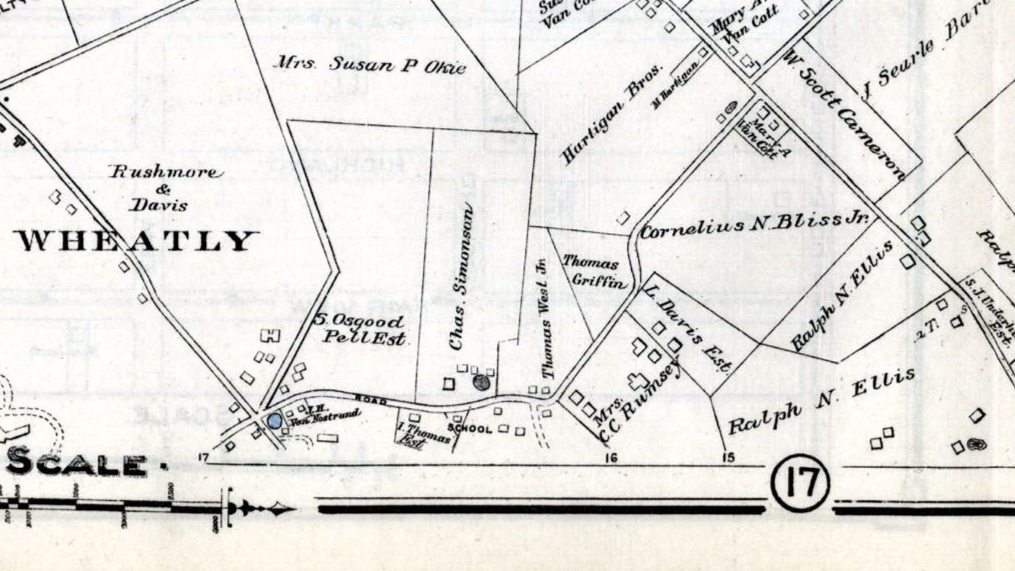
April
After some work, which included planting rhododendrons (which are still there and are referred to as ‘Rudy’s Rhodos’), his employment with Mr. Bliss, at his estate, at Brookville, outside the city on Long Island, abruptly ends, after he crashes a borrowed motorcycle. It’s also an issue that the return of Mrs. Bliss, from Europe, has ended plans for an Italian garden. Rodolfo himself isn’t enjoying being so far from Manhattan. And isn’t too pleased to be eating his meals with the other servants.

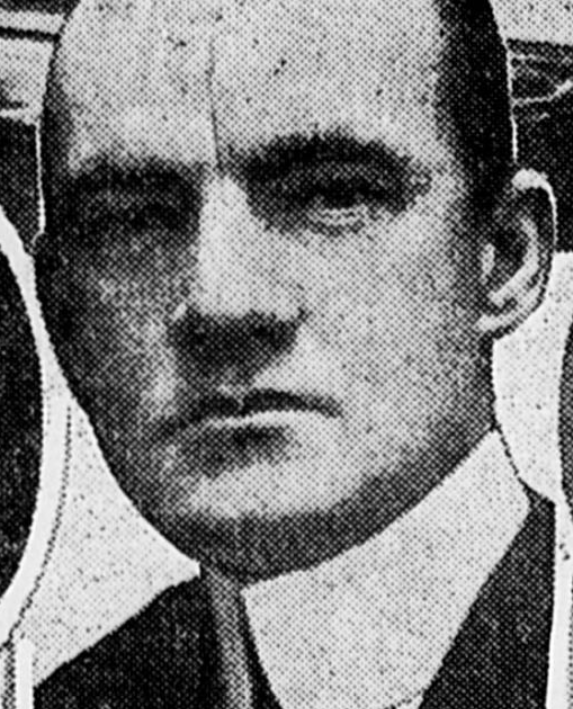
Cornelius N. Bliss Jr., a kind-hearted type, then President of the New York Association for Improving the Condition of the Poor, provides him with a letter of introduction, to the New York City Parks Commissioner, Louis F. La Roche. He also, amazingly, provides him with a small weekly allowance so that he can manage in the short term.
Rudy returns to Manhattan, able, just about, to manage on his recent earnings, and his allowance from Bliss. Despite his worsening situation, it seems, from time-to-time, that he’s still able to enjoy the cafes and restaurants.
Rodolfo Guglielmi doesn’t grasp that Mr. and Mrs. Bliss are two people who, in time, could’ve seriously helped him with a career as a Landscape Gardener. However, he did understand he was a million miles from entering, or being accepted in, Society. Painfully aware. And this was something of a problem for him.
May
After resettling back in the city, sometime in May, Rodolfo secures a less pleasant position as an Apprentice Park Gardener. He works the majority of the month. But eventually discovers that he’s unable to continue working, as the apprenticeship exam is open only to American citizens.
By now Cornelius N. Bliss Jr.’s small allowance has probably ceased. The little he’s earned in May is disappearing. And he searches for some other kind of employment.
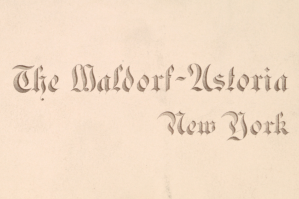
It’s probably in May and June that he goes to the Waldorf-Astoria, one of the great New York hotels, to write on the their fine stationery to his mother (to reassure her that he’s alright and is doing well). That he eventually revealed this to his family, is known, thanks to his older brother, Alberto, mentioning it in a lengthy interview in 1977.
June
He manages to secure a position as a Bank Teller. However, due to poor English, or an inability to calculate quickly enough, or both, he loses this job. And is once again forced to look for another vacancy.
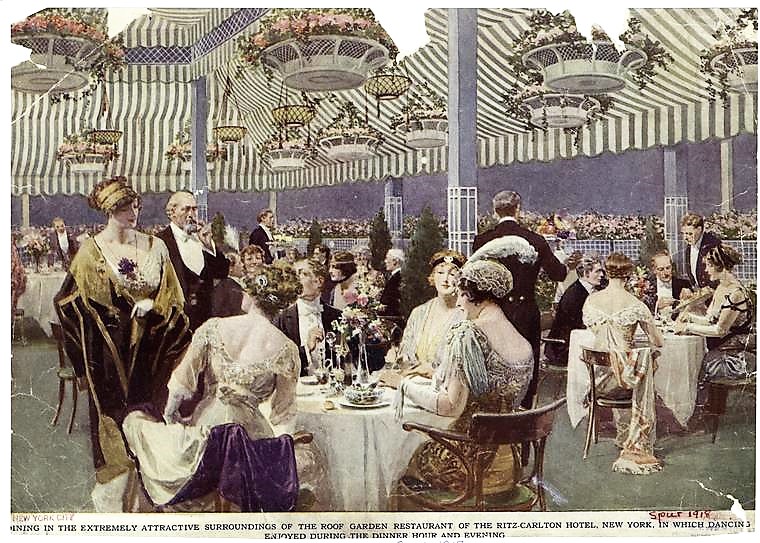
It’s now, in mid. June, that he catches the eye of ‘Dickie’ Warner – true name Richard H. Warner – a blonde, blue-eyed man in his late twenties, who’s as much of a Social Moth as Schuyler L. Parsons Jr.. Apparently, Dickie sees him: “… seated at the opposite side of the dancing space in company of several friends.” After a formal introduction they converse. And days later he invites him to dinner on the roof of the Ritz-Carlton Hotel. On that warm evening, they afterwards sit drinking coffee and smoking cigarettes, and Rodolfo opens his heart to the near stranger. Telling him he’s a foreigner in a foreign land. Isn’t getting anywhere in his profession. And is: “… too proud to seek aid from his family.” Dickie’s sympathetic and tells Rudy he can move into his apartment with him until things improve. Which, the very next day, he does. Warner helping him to pack his possessions at his “anything but cheerful” lodgings. Thus commences a quite lengthy and comfortable stay, at Dickie Warner’s gorgeously decorated two room studio, at 78 West 55th Street. Rudy wakes late each day; lounges about in pyjamas in Warner’s tulip wood bed; plays with the cat, Prunella; and talks on the telephone to his girlfriends. His host is irritated by his poor English but doesn’t mind his singing. (The song that he sings most often is Mamma Mia.)
Warner’s detailed – too detailed to be fabricated – account, which was published in the early Twenties, in a piece entitled, Before They Were Famous, in SCREENLAND, reveals much about Rudy half way through 1914. He continues to frequent some of the places he enjoyed earlier that year as and when he can. Has friends. And is still able to dress and present himself well. Warner remembered: “… distinctly, his dress suit, also the handiwork of a tailor in Taranto.” This pretty much proves false, the claim that Frank A. Mennillo took him to his New York tailor, to kit him out in more suitable, American garb. He was in May and June still wearing all of the garments he’d carried with him at the end of the previous year.
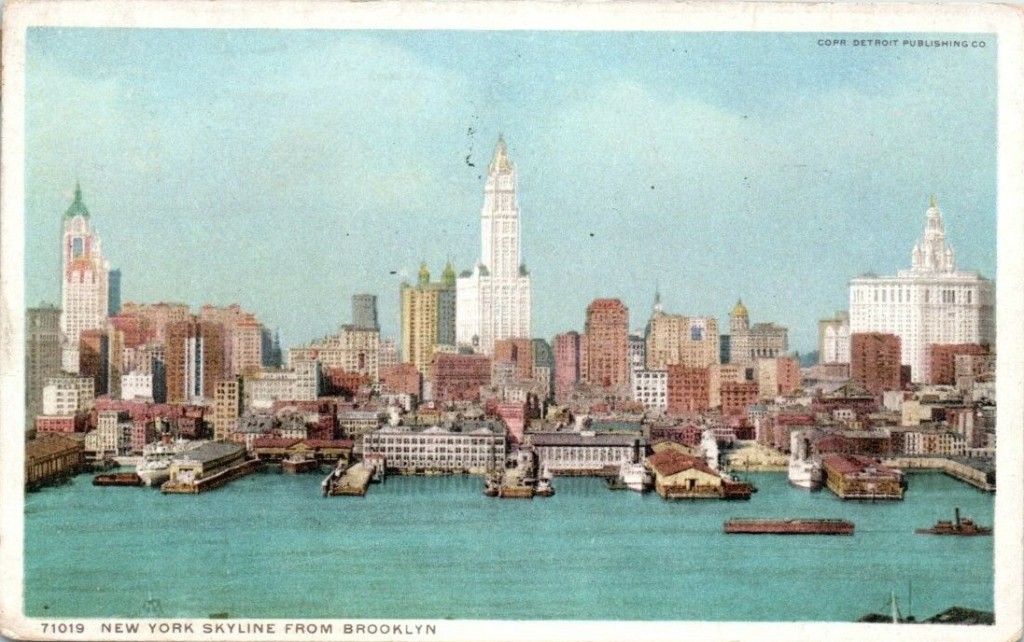
So far he’s moved from Giolitos, to Uptown, then out to Long Island, then back to Manhattan. (He also appears to have been in Brooklyn at some point in order to be able to save money.) Living with Dickie facilitates indolence. For the time being, at least, he seems in no hurry to do anything, except laze, pet Prunella, and speak for hours on the telephone. According to his host a stay of a few days stretches to many weeks. In my estimation at least a month to six weeks.

July
Rudy continues to live with Dickie. At some point the pair enjoy a trip to Long Beach; for so long, that Warner is forced to wire a friend in the city, and get them to climb through a window, in order to feed the cat.
At the end of the month World War One breaks out in Europe. However, as neither Italy nor America are initially involved, it doesn’t yet affect Rodolfo Guglielmi, or, his family.
August
After six or so weeks his stay with Warner ends. Where he goes next isn’t too clear. Yet it’s certain about now is when things begin to get very tough. For the next eight weeks he goes from poorly-paid job to poorly-paid job. He washes dishes, cleans automobiles, and polishes brass; anything that will give him enough money to be able to eat and pay for a place to sleep.
This is a period where he’ll move about even more frequently, staying a week here, then a week there. Always moving. He’s forced to pawn his belongings. What’s left is kept by a Landlady that he’d been unable to pay. In later years, he told Norma Talmadge a story about walking five miles to City Hall, in order to find work, and, after failing to, how he’d bought a “bologna sandwich” with his very last ten cents, before walking the five miles back. The fact Norma recalled such a story, in 1938, again shows he couldn’t possibly have had a Godfather during this time.
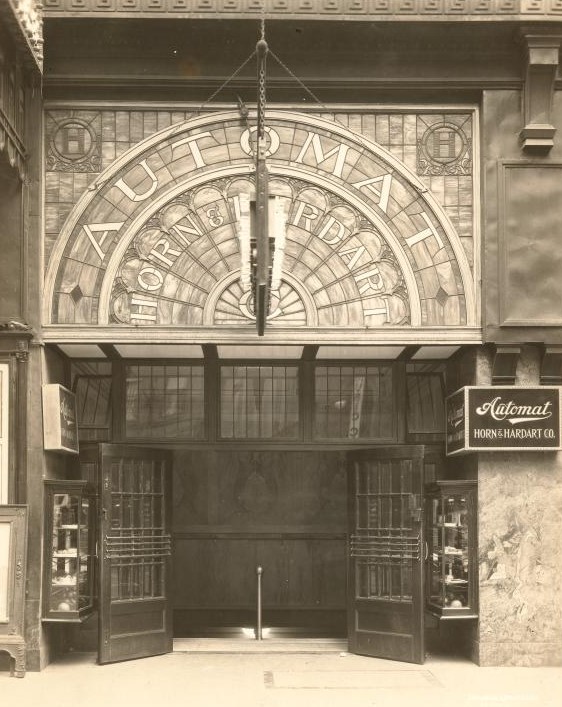
September
Nineteen-year-old Rodolfo continues to suffer. He eats at one, perhaps all, of the Horn & Hardart Co. Automats, on Broadway, Sixth Avenue and West 42nd St. And he sleeps at the downbeat, Mills Hotel, which charges 12 cents per night. When he can’t even afford that he doesn’t eat and sleeps on a bench in Central Park. (He also sleeps under the shrubbery and in all-night cinemas.)

There’s absolutely no evidence nineteen-year-old Rudolph Valentino was forced to commit any crime in order to survive; but we must consider the possibility he may have had no choice. It’s interesting, that in a letter home, he feels that any work is better than a life of crime. And it’s in this letter, according to the family, that he reveals he’d come very close to compromising his honour. So if he didn’t commit a crime it was certainly on his mind. The disappearance of the contents of his police file, decades ago, doesn’t allow us to be sure one way or the other. In a report, in The New-York Tribune, in 1910, vagrants were only arrested if they were considered to be a ‘Cadet’ — in-other-words, a person learning to be a street criminal. If they were, they were discharged, sent to a work house, or, fined. If Rudy slept on a park bench, he would simply be moved along; as Anthony Dexter was, as Valentino, in Valentino (1951). (A rare instance of accuracy in an otherwise largely inaccurate film.)
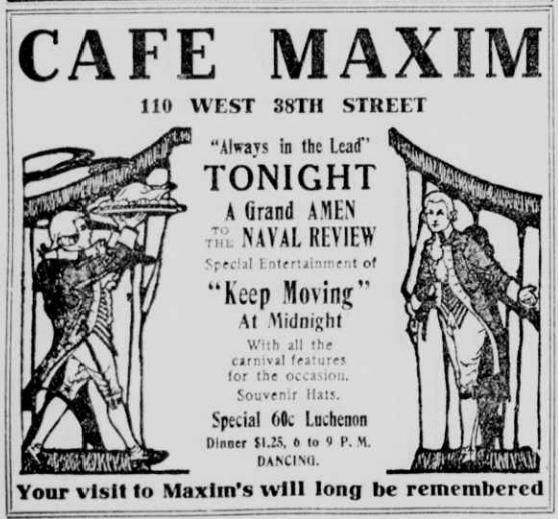
October
Broke and homeless things are so bleak that Rudy contemplates suicide. Then a Mystery Man he meets changes his luck. The person, apparently an Italian, takes him under his wing, shares his food and his bed, talks to him, gives him advice, and perhaps allows his guest to get a wash and to shave. The next day, or soon afterwards, after the suggestion, Rodolfo heads to Maxim’s/Cafe Maxim to speak to the piano player (who’s from Taranto). The piano player suggests talking to the Head Waiter there. When he does, The Head Waiter recalls him from earlier in the year, and offers him work as a dance partner for hire. (To dance with females who aren’t already accompanied by a male.) He accepts and commences that month. There’s no pay, but he can eat for free, keep any tips, and use an upper room, with a Victrola, to give dance instructions on the side.
A different version of Rodolfo’s spell as a dancer, at Cafe Maxim, is found in the owner, Julius Keller’s, 1939 memoir, Inns and Outs. Keller claims that he himself hired him. And that Rudy had been washing cars at a nearby garage. Keller says that he found the young man to be “dark and romantic in appearance”. Whether it was Keller’s or another proprietor’s innovation isn’t clear. But dance partners for hire were far from unique to Maxim’s. They were very much looked down upon at the time as it was considered to be an unsuitable profession for a Real Man.
Maxim’s was, along with Sherry’s, Delmonico’s, Luchow’s, Churchill’s, Rectors, Murray’s, and a few other venues, a restaurant that allowed patrons to dance. Their adverts in September declared that it was the “COOLEST and BEST VENTILATED DINING ROOM in TOWN”. That luncheon was just 60c. That dancing was from noon to close. And the cabaret was after 6:30 p. m.
November
Dark, romantic Rodolfo Guglielmi swiftly enhances his natural ability, and is an instant success with patrons. He returns to being a Marchese; but, perhaps due to the French atmosphere of the establishment, tells customers he’s a Marquis. By now he has many regular female dance partners. And these varied ladies generously tip him and shower him with small gifts.
In the third or fourth week of the month, Bonnie Glass (“the most original young person in the [dancing] profession”), and her former dance partner, Clifton Webb, arrive at Cafe Maxim and take a table. Glass has asked Webb to assist her in searching for a talented new partner, and they soon notice: “… a remarkably handsome, dark young man named Rudolph.” Bonnie is impressed by his tango and, on the spot, offers him the job. He tells her frankly that he doesn’t have the money to pay for the clothing required. And she tells him that she’ll cover the cost.
In Clifton Webb’s posthumously published autobiography, Sitting Pretty: the Life and Times of Clifton Webb, 2011, the then very notable Bonnie Glass had recently returned from Chicago. Checking her engagements in late 1914 I saw this to be the case. (She’d danced in Chicago recently with Al. Davis.) And so I trust both Clifton Webb’s memory and his story. It seems Bonnie had a partner – George Richmond – but he was temporary. And, as she had plans for 1915, that included re-opening the grille of Cafe Boulevard, at Broadway and 41st Street, as Cafe Montmartre, she required somebody reliable who’d be available nightly. (For me this settles once and for all the question of how they met and came to be a successful Act.)
It’s easy to imagine Rudy’s delight in being singled out by Bonnie and Clifton after they’d left and it all began to sink in. In no-time-at-all he would be able to quit the establishment and leave behind him, perhaps forever, the life of a Taxi Dancer — a life he found more than a little distasteful.
December
During the first two weeks of the month Rodolfo rehearses with Bonnie in the mornings and continues to work as a hired dancer, at Maxim’s, in the afternoons and evenings. He likewise continues to be the favourite of several ladies (as mentioned by Keller in Inns and Outs). And utilises the upper room, with the Victrola, to provide private instruction for a fee.

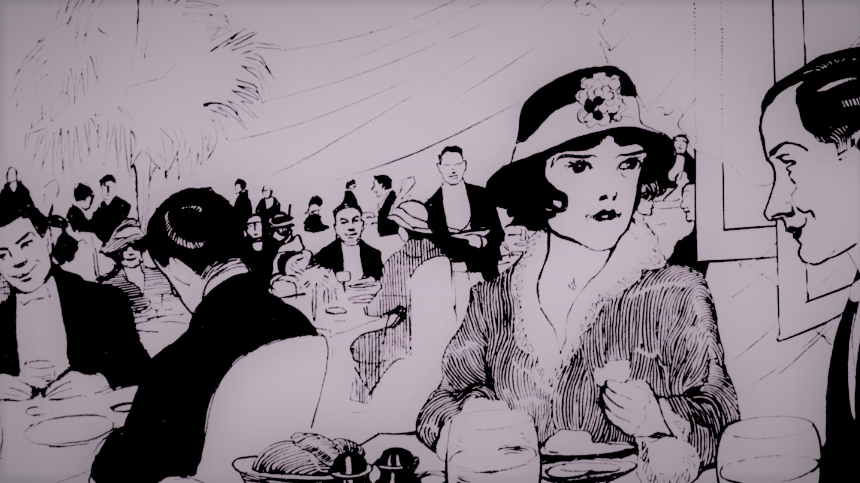
Mid. December, he dances for the first time with Glass, at Rector’s, in front of their “stage setting”, for an elegant New York audience seated amidst “fronded palms”. He’ll continue to do so for the rest of the month. And, though he fails to be credited at this point in any adverts, he’s buoyed by the realisation that bigger things lie ahead of him in 1915. In only a matter of months he’s turned his life completely around. This year, the Festive Period will not be the lonely, upsetting affair it was twelve months before.
Thank you so much for reading this post. As always, the sources are available to anyone who contacts me, if they’re not already embedded into the text, or added as an image. This latest timeline will be followed by others looking at the years 1915 to 1917. And I’ve planned standalone posts for his 1916 arrest and also the missing half year. See you all in July!
An EXCELLENT piece, and equally excellent research! Rudy does several times mention Salm, particularly to his friend/lover Robert Florey, when he says how he “pinned Alex against the wall” and refused to let him go until he had taught him the tango. Salm is also the one who wants Rudy to travel with him to South America, where he will be expected to work his passages, suggestive that the would be expected to sell contraband, or maybe even himself. Mennillo did not take Rudy to a tailor. The stories of Mennillo befriending Rudy when he arrived in New York, and the even more ridiculous one that he was Rudy’s godfather are completely false. There is absolutely no evidence of their knowing each other until later in Rudy’s career. That he and Rudy were lovers is more than possible, and definitely so in the case of Richard Warner. Like the slightly later Ben Maddox, Warner rarely shared interest in a man unless sex was involved. The man who took Rudy to the tailors was the Belgian actor, Jules Raucourt. (All of this will be detailed in https://valentinocultistthreads.blogspot.com . The “Mystery Man” was almost certainly Salm. who by then had hooked up with Raucourt. Thank you again, Simon, for such an innovative post!
LikeLiked by 1 person
Hello. And thank you for commenting. I don’t dwell on the Salms, or Warner, or any others at this time, anymore than I felt was necessary for a Timeline, of which this is just the second so far. I plan to look at his sexuality separately, and in great detail, when I feel the time is right. Now isn’t the time. You’re obviously way ahead of me when it comes to that topic. Way ahead. I have to say Warner fascinates me. As you know he was right at the heart of one of the biggest New York society scandals of 1915: The Eugenia Kelly Affair. And he leaps off the page in his newspaper interview in the middle of all that. Clearly an extremely appealing person — just like Schuyler L. Parsons Jr.
LikeLike
Marvelous piece Simon. Rudy certainly experienced in one year what most of us take a lifetime to achieve. You already know how I feel about the automat, and the story about him laying bed (wearing pajamas), playing with Prunella the cat while talking to his girlfriends on the phone was priceless. And when is the book coming out? You must know that you have a potential bestseller in the making. Thank you for always keeping it real!💞
LikeLiked by 1 person
Keeping it as real as I can, which isn’t easy, as you know. Your support is invaluable. And you’ll be the first to know about “the book”! X
LikeLike
Awesome write Simon, as always.
LikeLiked by 1 person
Thank you. Next one coming up in a week or so.
LikeLike
Oh, Simon! First of all…the photo of Rudy as a gardener! That was such a huge surprise and one I’d never seen before! What a treasure!
This entry was fabulous! So much information about him during this year’s timeline! I, too, really adored the image of him lounging with Prunella and talking on the phone for hours! New information for me and SO fun to know!
So much loving research here again, Simon. Thank you SO much!
LikeLiked by 1 person
Carol I’m so pleased you enjoyed it. So SO pleased. 1915, 1916 and 1917 yet to come of course. And standalone posts for his arrest, and the missing six months, between September 1916 and Spring 1917. Best wishes.
LikeLike
Simon, e’ sempre un piacere leggere i tuoi post. Spero che un tuo libro venga tradotto anche in italiano, perche’ avresti molti lettori anche in Italia.
LikeLiked by 1 person
Molto gentile da parte tua commentare e fare un suggerimento! Grazie!
LikeLike
Thank- you Simon for your latest blog. They are so informative, and interesting. Cant wait until your next one comes out. Keep up the good work!!
LikeLiked by 1 person
And thank you, for reading, commenting and supporting me, I really appreciate it. The next Timeline is up in August and it will be even more detailed. In between, next month, is a fun post about Chateau de Juan-les-Pins.
LikeLike
Hello! I’m sorry for not telling you this sooner, but I nominated you for the Sunshine Blogger Award! Here’s the link to my post:
https://18cinemalane.wordpress.com/2019/06/21/my-third-sunshine-blogger-award-of-2019/
LikeLiked by 1 person
Good heavens. How lovely. I’ll check the link. Thanks.
LikeLiked by 1 person
You’re welcome! I can’t wait to read your answers to my questions!
LikeLiked by 1 person
I’m sorry to disappoint but when I cut and pasted your text it began to do weird things and was impossible to edit. Likewise with The Sunshine Blogger Award logo. Couldn’t find any way around it. My best wishes.
LikeLiked by 1 person
That’s ok. Every blogger experiences technical difficulties, myself included. What’s important is that you tried your best to handle the situation. Keep up the good work!
LikeLiked by 1 person
I admit I felt a twinge of envy when I read this description of a Valentino day: “Rudy wakes late each day; lounges about in pyjamas in Warner’s tulip wood bed; plays with the cat, Prunella; and talks on the telephone…”
LikeLiked by 1 person
Yes! WHO manages that? maybe at the Week End!
LikeLike
Fantastic piece, thanks, a lot to digest. One detail I see missing is his acquaintance with Manuel Reachi, which according to Santiago Reachi’s autobiography happened very early in Valentino’s stay in New York. Manuel was in the City since at least 1914 (and possibly earlier), and Santiago mentions meeting Manuel and Valentino in Rector’s in 1915. Santiago also claims that Manuel taught Valentino the Tango, but that seems unlikely. Manuel and Valentino were best friends, and Manuel was one of the pallbearers at Valentino’s funeral in L.A.
LikeLiked by 1 person
And thank you, for reading and taking the time to comment, and adding your thoughts and info. regarding his very good friend, S. Manuel Reachi. The timelines, which admittedly remain incomplete, are definitely due an update. I, myself, regularly happen across new material, yet, going back into them, and using the Old Editor, is a bit of a concern. I will be revising them. And I’ll be adding to them by creating new posts. In fact, I’ve one coming, which focuses on a female friend from 1914. All that aside, they will never be absolutely finished, or 100% correct, as his pre fame years weren’t as well-recorded as were his post fame ones. And that’s why it’s my favourite period I suppose. So many gaps. I recall I dismissed Reachi being in New York as early as 1914/1915 due to his original location, West, and there being a greater likelihood he met him at Pasadena, at The Maryland Hotel, where Valentino was staying/dancing, at one point. S. Manuel related a story himself about wanting to invite Rudy to his table and the management saying dancers weren’t allowed to and him insisting. Also, he loaned him his smart car to go to various studios, to seek work, before stardom, and that would’ve been impossible were he on the East Coast in those years. As for the Tango that comes up over and over everywhere. I stick with what I believe I put into the 1913 or 1914 timeline; that he knew the fashionable dances, including the Tango, when on his way to the US on The Cleveland. We know this because his fellow passenger related it in a letter to a Biographer. And his Brother, Alberto, said he never took a dance lesson in his life. Of course his time with Bonnie was his finishing school. I do wonder, sometimes, what would’ve happened to him had he not been given a chance by her.
LikeLike